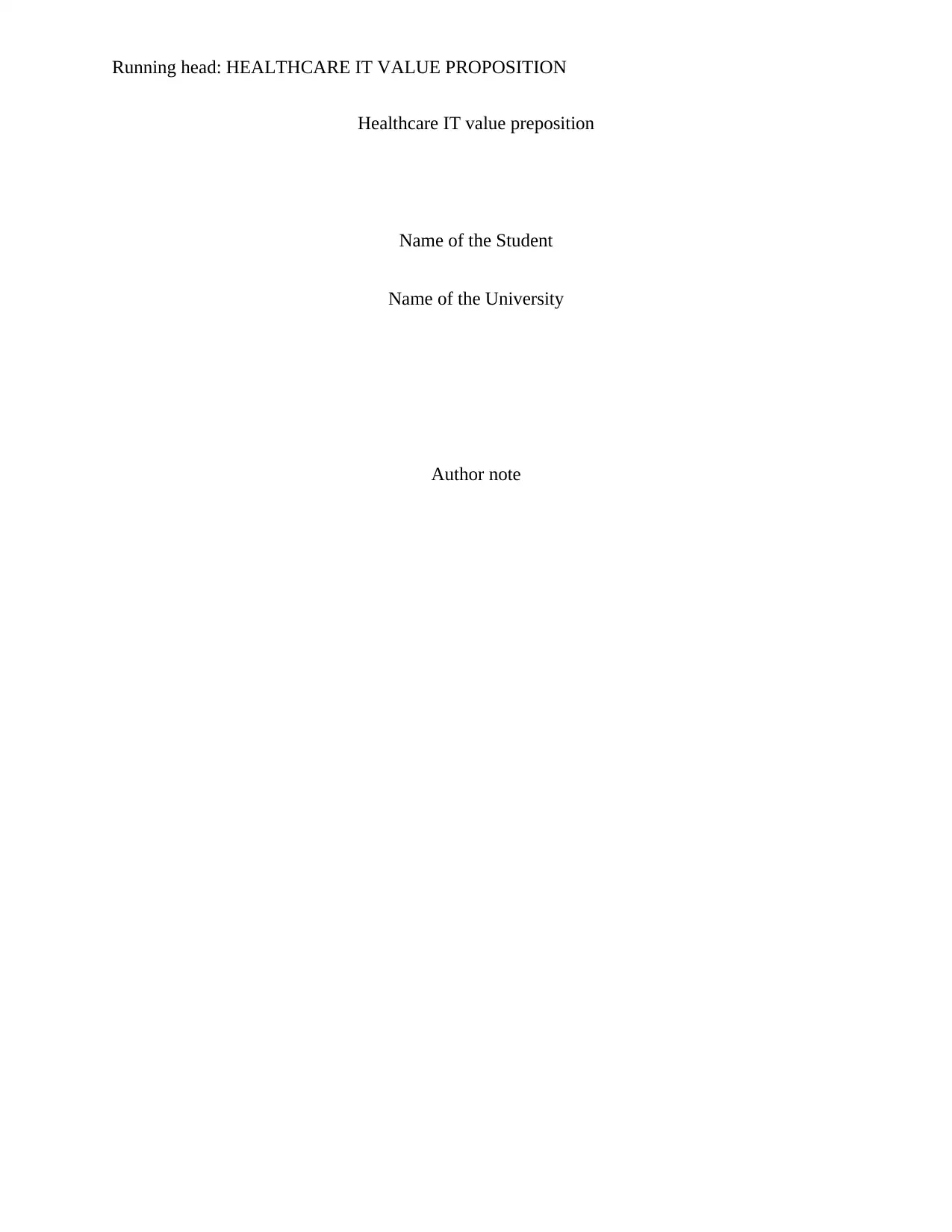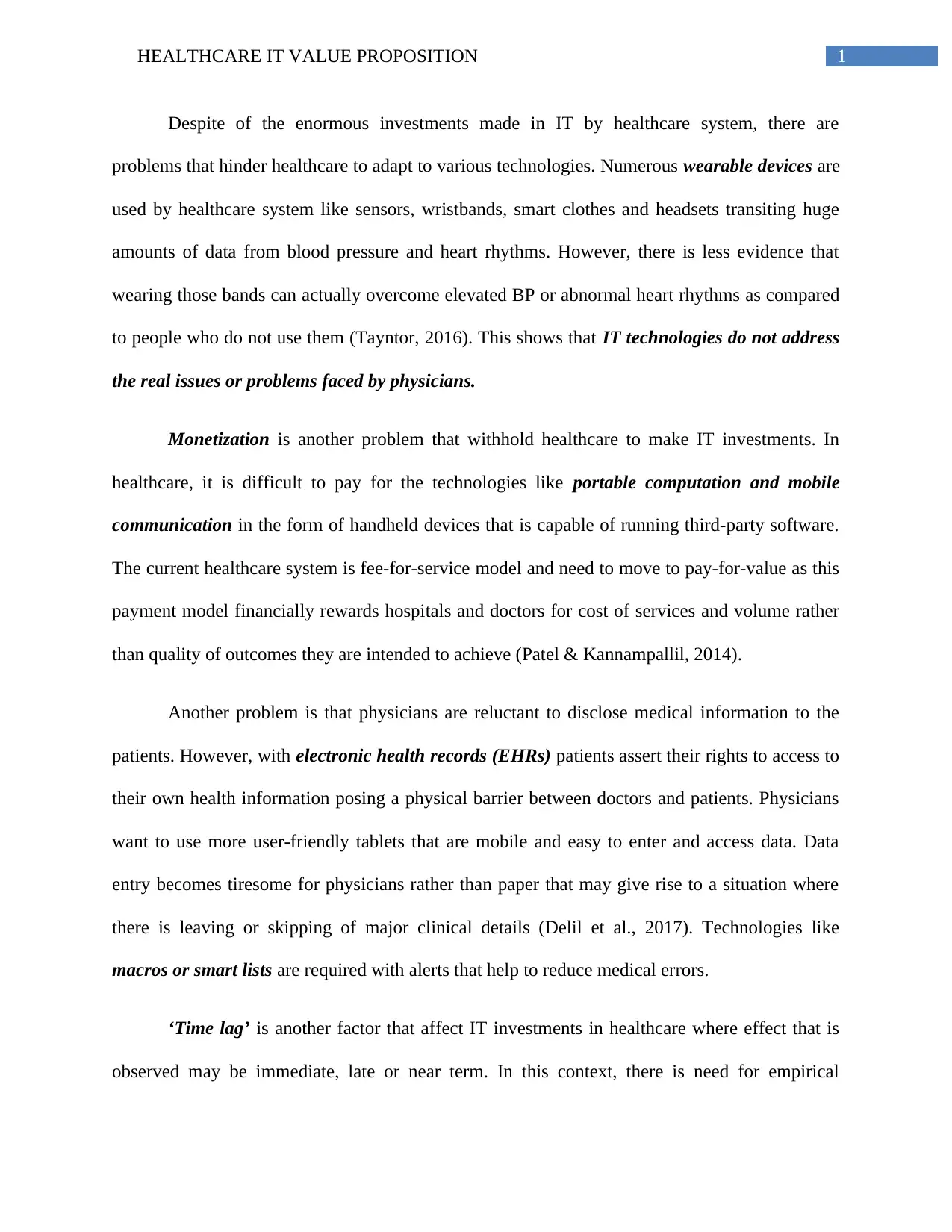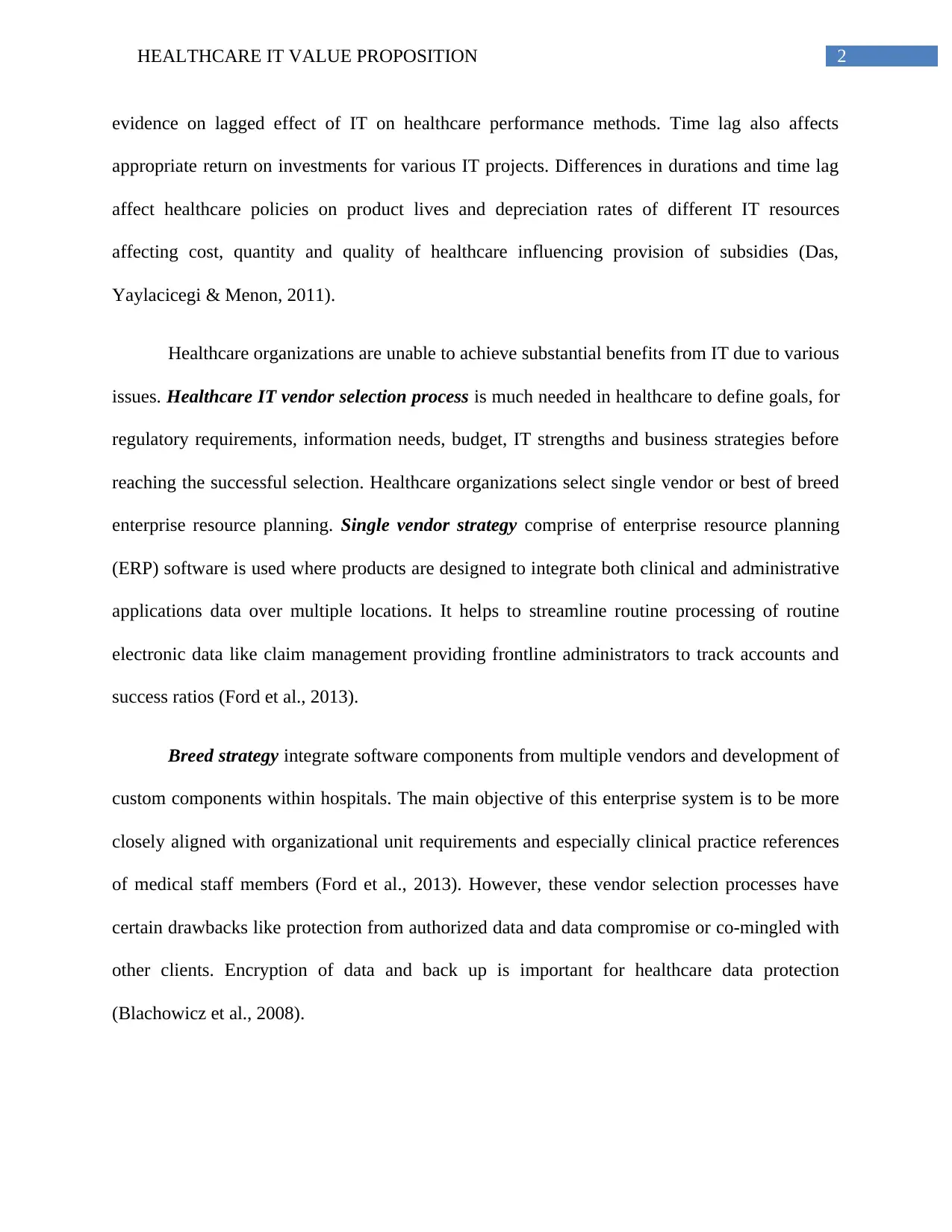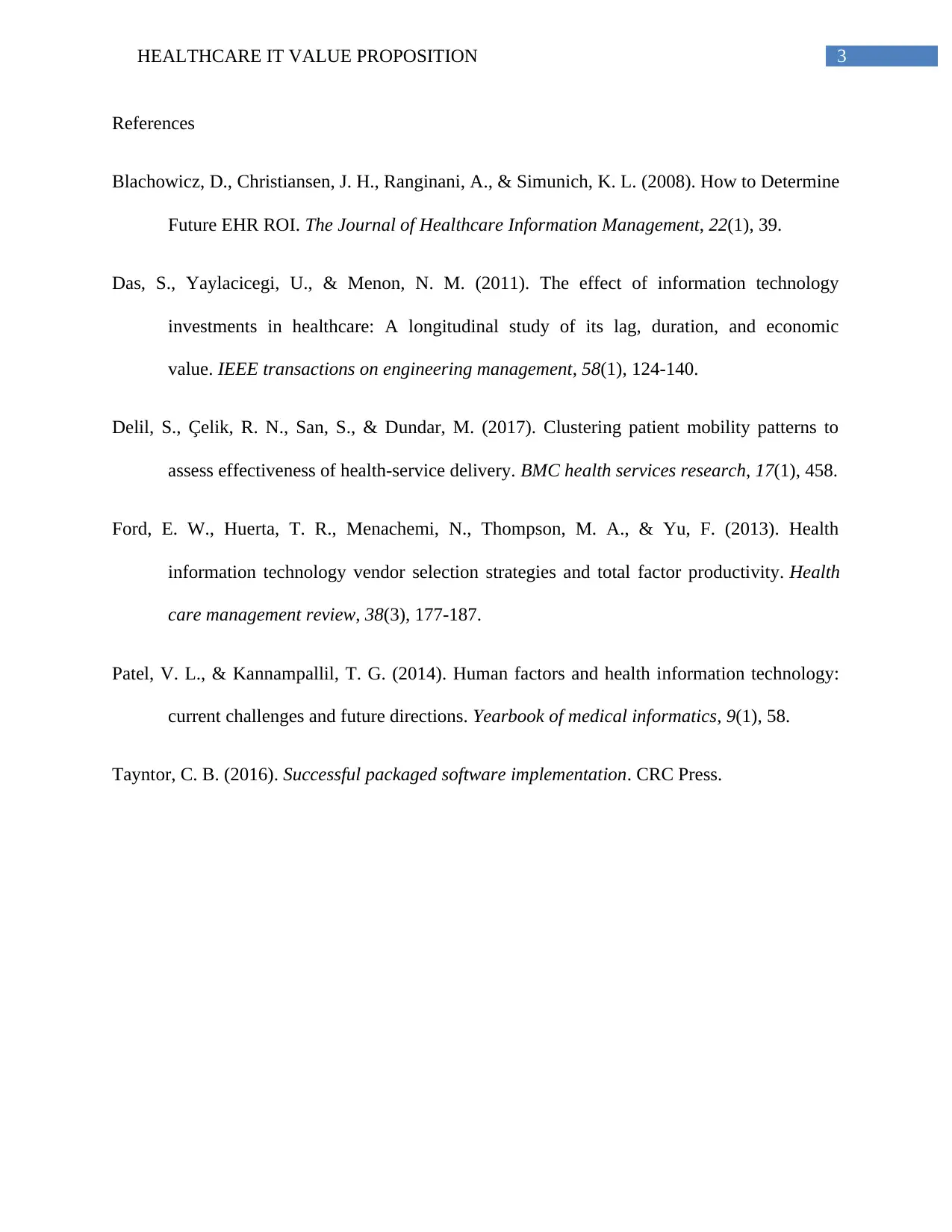Healthcare IT Value Proposition: Problems, Solutions, and Analysis
VerifiedAdded on 2020/05/28
|4
|894
|41
Report
AI Summary
This report delves into the Healthcare IT value proposition, examining the challenges and solutions within the healthcare sector. It addresses the issues hindering the adaptation of various technologies, such as the limited evidence of wearable devices' effectiveness and the monetization problems associated with IT investments. The report highlights the reluctance of physicians to disclose medical information due to the implementation of electronic health records (EHRs) and the need for user-friendly tablets. It also discusses the impact of time lag on IT investments, emphasizing the importance of empirical evidence and appropriate return on investments. Furthermore, the report explores the healthcare IT vendor selection process, including single vendor and best-of-breed strategies, while acknowledging the drawbacks like data protection. Overall, the report provides a comprehensive analysis of the problems and solutions related to IT investments in healthcare, offering insights into vendor selection and the impact of technologies like EHRs.
1 out of 4









![[object Object]](/_next/static/media/star-bottom.7253800d.svg)